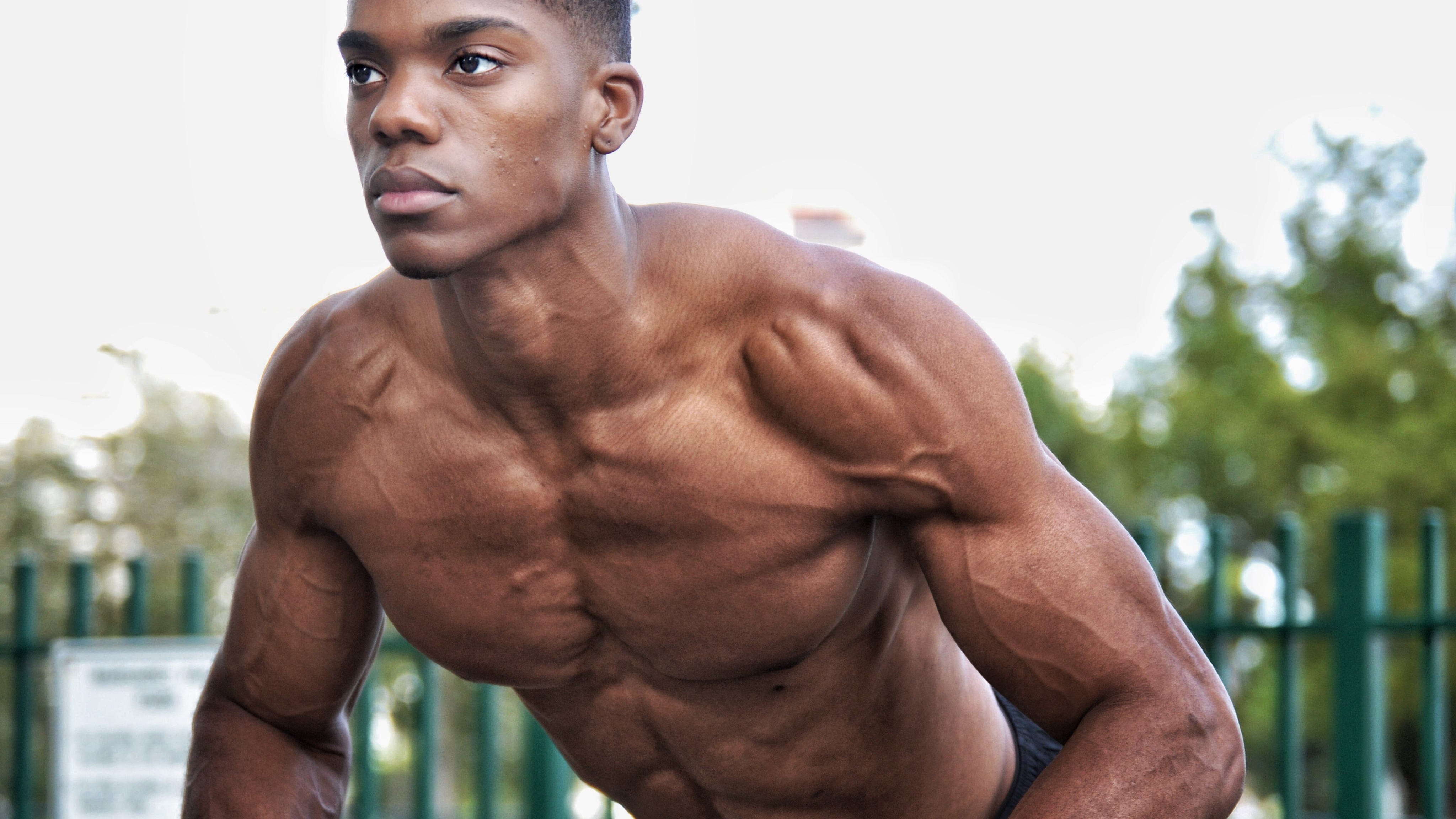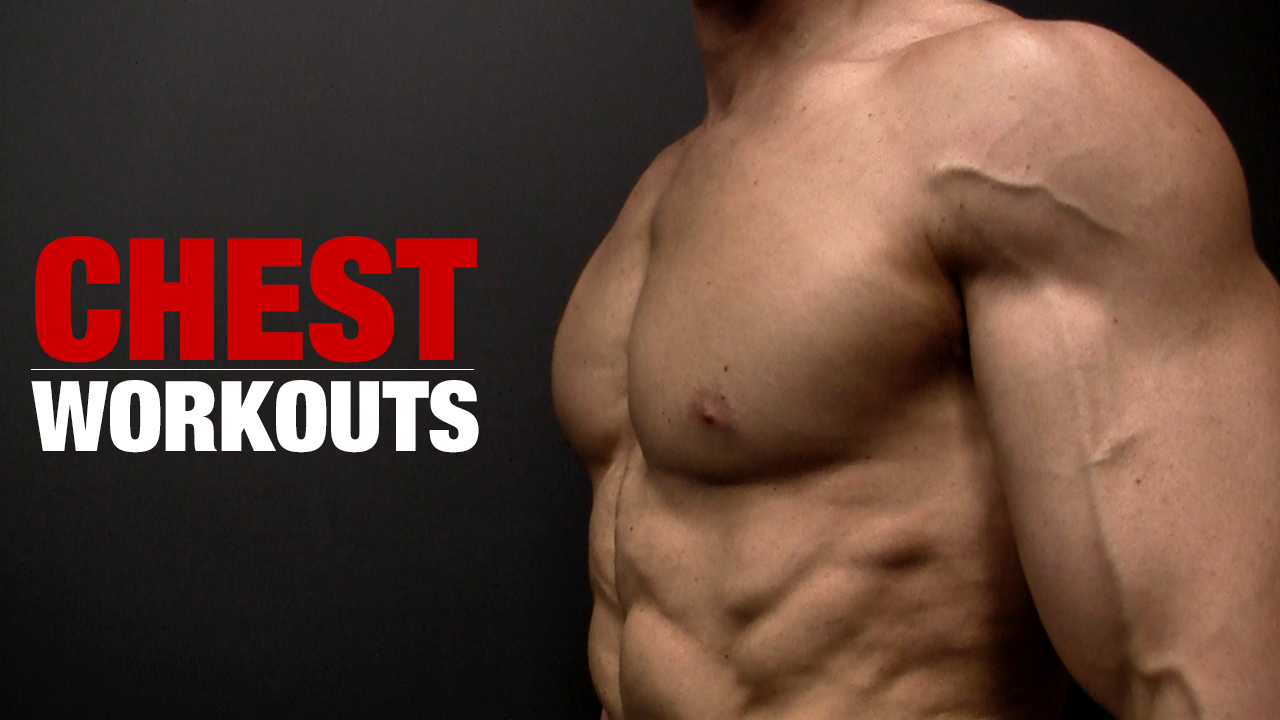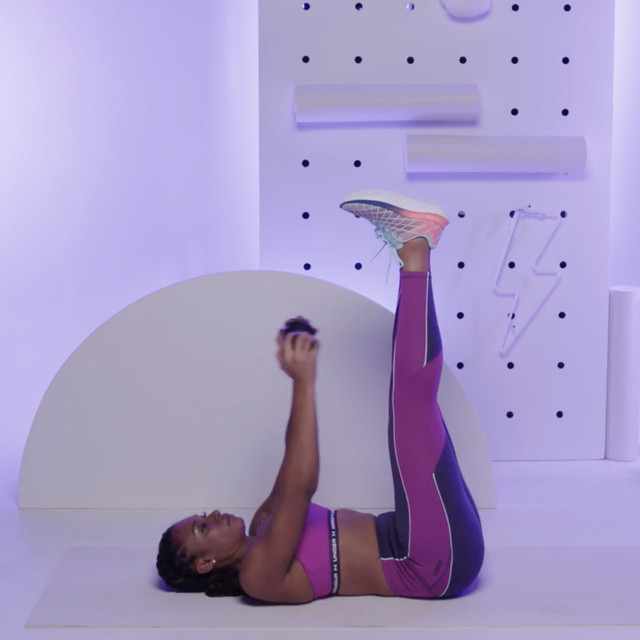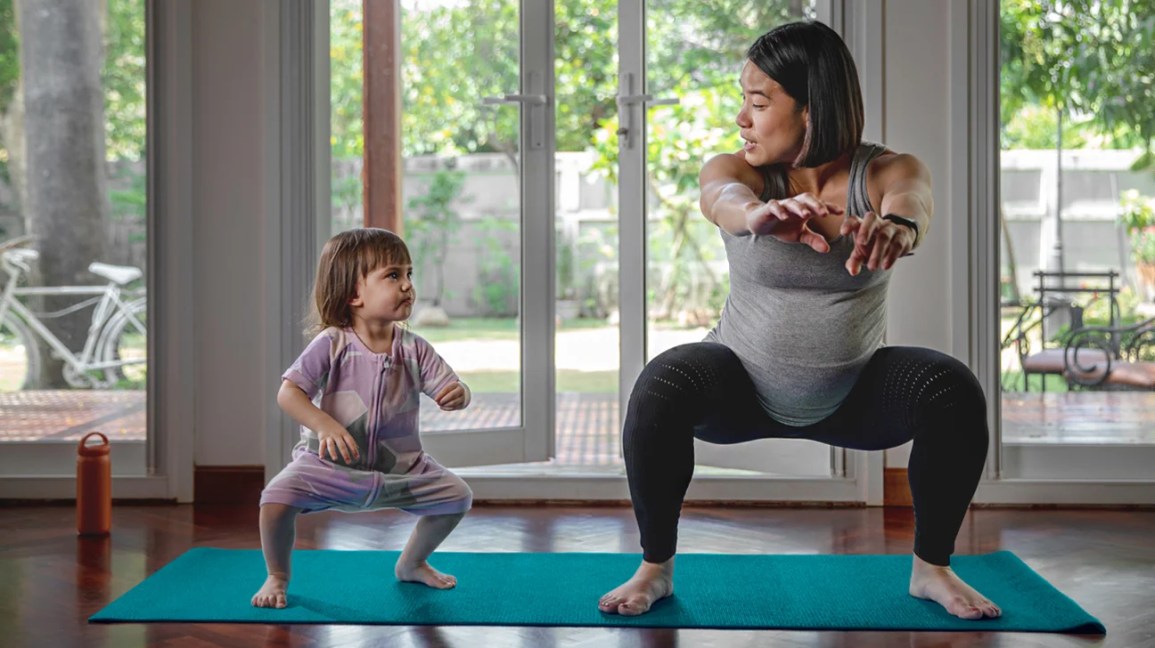Chest workouts encompass a variety of exercises like the bench press and push-ups. Key movements target pectoral muscles, improving strength and appearance.
Embarking on a chest workout routine is essential for those aiming to enhance upper body strength and build muscular endurance in their pectorals. Resistance training exercises such as the incline dumbbell press, chest dips, and the pec deck machine specifically focus on the chest muscles, promoting hypertrophy and functional power.
A well-structured chest regimen not only contributes to a more defined torso but also supports posture improvement and shoulder stability. Integrating these workouts into your fitness plan can lead to impressive results, whether you’re an athlete or someone looking to elevate their physical health. Be sure to balance your chest exercises with appropriate stretches and complementary back workouts to maintain muscular balance and prevent injury.

Credit: www.menshealth.com
The Anatomy Of A Powerful Chest
Crafting a chest that turns heads not only requires consistent training but an understanding of the muscles you’re working. A powerful chest is the hallmark of a strong physique. It’s not just about bench presses and push-ups; it’s about knowing what makes up that broad armor plate. Below we delve into the anatomy of the chest, highlighting key muscles and the role of stabilizers in chest workouts.
Key Muscles In Chest Development
At the core of chest development are two major muscles. The pectoralis major, your chest’s largest muscle, spans from your shoulder to your sternum, helping to flex, extend, and rotate the arm. The pectoralis minor lies beneath, assisting in scapular movements. Proper chest workouts target both for symmetrical growth.
- Pectoralis Major: The fan-shaped muscle defining chest bulk.
- Pectoralis Minor: Smaller but crucial for chest depth.
- Serratus Anterior: This muscle complements the chest by providing a shredded look.
- Subclavius: Though smaller, it assists in the movement of the clavicle, improving shoulder stability.
The Role Of Stabilizer Muscles In Chest Workouts
Stabilizer muscles might not be as visible, but they are just as important. They keep your limbs steady as you lift, ensuring the primary muscles work effectively. The triceps brachii support the arm during chest exercises, while the rotator cuff muscles stabilize the shoulder joint. The deltoids also play a role, balancing the shoulder as you target your chest.
| Muscle | Role in Chest Workouts |
|---|---|
| Triceps Brachii | Support arm extension and add power to push movements. |
| Rotator Cuff Group | Stabilize shoulder joint to prevent injuries. |
| Deltoids | Assist in lifting and provide overall balance for the upper body. |
| Rhomboids and Trapezius | Maintain scapular movement and stability. |

Credit: www.menshealth.com
The Importance Of Warm-ups
Starting a chest workout without warming up is like driving a car without revving the engine. A proper warm-up preps your muscles, boosts blood flow, and reduces injury risks. It also enhances flexibility and performance. Think of it as the foundation of your workout structure—vital for building strength and muscle safely.
Dynamic Stretching For Chest Days
Dynamic stretching involves controlled movements that improve range of motion and warm up the body. For chest days, these stretches can include:
- Arm Circles: Start small and gradually increase the diameter to loosen the shoulder joints.
- Chest Hugs: Open your arms wide, then quickly hug yourself to stretch the chest muscles.
- Wall Slides: Lean on a wall and slide arms up and down to activate the upper body.
These moves get blood flowing to your pectoral muscles, preparing them for heavy lifting.
Activation Exercises For Better Performance
Activation exercises wake up the muscles that you will use during the workout. Optimal activation leads to improved strength and muscle growth. Try these before hitting the bench:
- Push-ups: A classic move that activates the entire chest area.
- Band Pull-aparts: Using a resistance band, work on the opposite movement of pressing, to balance the muscles.
- Shoulder Taps: A plank variation that stabilizes and fires up the core and chest.
Performing these ensures better muscle engagement and primes your body for intense workouts.
Top Chest Exercises For Mass And Strength
Building a solid, muscular chest calls for exercises that target growth and strength. The selection of chest exercises for mass and strength goes beyond just pushing weights. Finding the right mix of movements can pack on size and develop power in your chest. Let’s dive into some key lifts that will help you build that powerful chest.
The Bench Press Family
The bench press stands as the cornerstone for chest development. Its variations hit your chest from multiple angles, promoting size and strength gains. Three forms dominate:
- Flat Bench Press: The classic move works your entire chest.
- Incline Bench Press: Targets the upper chest, preaching a powerful shelf.
- Decline Bench Press: Focuses on the lower chest, crafting a well-rounded look.
Employ a mix of these to engage different chest fibers for maximum growth.
Flying Into Growth With Dumbbell Flyes
Dumbbell Flyes stretch and contract the chest, cultivating width and definition. They complement the pressing movements with a focus on chest isolation.
| Exercise | Benefits |
|---|---|
| Flat Dumbbell Flyes | Streamline the middle chest, enhancing mass. |
| Incline Dumbbell Flyes | Elevate and carve the upper chest. |
| Decline Dumbbell Flyes | Rainer focus on the lower chest for balanced development. |
With the attention on the stretch and squeeze, Flyes make an essential addition for those looking for a full, strong chest.
Incorporating Bodyweight Moves
Incorporating bodyweight moves into a chest workout enhances strength and endurance. These exercises can offer extensive benefits without requiring equipment. They’re perfect for home workouts or when you lack access to a gym. Below, we delve into key exercises that leverage your body’s weight for an impactful chest session.
Push-ups: Variations And Techniques
Push-ups are a staple in bodyweight routines. They target the chest, shoulders, and triceps. To engage different muscle groups, let’s explore a few variations:
- Standard Push-Up: Start in a plank position with hands under your shoulders. Lower your body until your chest grazes the floor. Push back up to the starting position.
- Wide Grip Push-Up: Place your hands wider than shoulder-width. This variation places more emphasis on the chest muscles.
- Diamond Push-Up: Bring your hands together under your chest, forming a diamond shape. This technique targets the triceps and the inner chest.
- Incline Push-Up: Place your hands on an elevated surface. This focuses on the lower chest muscles.
For best results, maintain tight core and flat back during each repetition.
The Power Of Dips For Lower Pec Engagement
Dips are effective for strengthening the lower pecs. They also involve the shoulders and triceps. Use parallel bars and follow these steps:
- Grasp the bars and hoist yourself up to an initial position with arms extended.
- Lean forward slightly, keeping your elbows tucked in.
- Lower your body until your shoulders are just below elbow level.
- Press down on the bars, raising your body back to the starting position.
Breathe in on the way down and out when lifting yourself up. Dips can be challenging, so progression is key.
Advanced Chest Training Techniques
Advanced Chest Training Techniques take chest workouts to a new level. They help break plateaus. These strategies encourage greater muscle growth. Ready to challenge your pectorals like never before?
Supersets And Dropsets For Intensity
Supersets pair two exercises back-to-back with no rest. Try combining push-ups with dumbbell flyes. This spikes intensity and endurance. Dropsets involve reducing weight mid-set to keep going. Start with heavier bench presses, then switch to a lighter load without pausing. These methods push muscles beyond standard limits.
- Superset example:
- Barbell Bench Press – 8 reps
- Immediately follow with Dumbbell Flyes – 8 reps
- Dropset example:
- Heavy Dumbbell Press – to failure
- Quickly switch to lighter weight – go to failure again
Eccentric Overload For Muscle Damage And Growth
Eccentric Overload targets the lengthening phase of an exercise. Slow down the downward motion of a bench press. It causes more muscle damage, sparking growth. Aim for a four to six-second count during the eccentric phase. This method boosts strength over time.
| Exercise | Eccentric Phase Duration |
|---|---|
| Incline Dumbbell Press | 4-6 seconds |
| Chest Dips | 4-6 seconds |
Workout Routines For Pec Enhancement
Building a strong, muscular chest is a goal for many fitness enthusiasts. The right blend of exercises can help sculpt and enhance your pectoral muscles. Whether starting on a fitness journey or seeking to intensify your regimen, these tailored workout routines aim to give your chest the definition and strength you desire.
Sample Beginner Chest Workout
Starting your fitness journey requires a solid foundation. A beginner chest workout focuses on form and endurance.
- Push-Ups: Begin with 3 sets of 10 reps.
- Bench Press: Use light weights for 3 sets of 12 reps.
- Dumbbell Flyes: 3 sets of 15 reps to stretch and build the chest muscles.
- Incline Dumbbell Press: Target the upper chest with 3 sets of 12 reps.
Rest for 60 seconds between each set. Ensure your form stays consistent.
Intermediate To Advanced Chest Building Program
As your strength progresses, so should your workouts. The following chest program challenges your muscles more intensely.
| Exercise | Sets | Reps |
|---|---|---|
| Barbell Bench Press | 4 | 8-10 |
| Incline Dumbbell Press | 4 | 8-10 |
| Chest Dips | 3 | To failure |
| Cable Flyes | 3 | 12-15 |
| Pec Deck Machine | 4 | 12-15 |
Focus on maximum muscle contraction and control the weight throughout each movement. Include 90 seconds of rest between each set for recovery.
Proper Nutrition And Recovery For Chest Growth
Building a strong, muscular chest calls for more than just exercise. Nutrition and recovery are the pillars that support muscle growth. This section digs into the diet and rest required to achieve those gains.
Nutritional Requirements For Muscle Building
Calories and macronutrients set the foundation for muscle building. Here’s what your body needs:
- Proteins: Essential for repairing and building muscle fibers.
- Carbohydrates: Provide the energy your workouts demand.
- Fats: Support hormone production, crucial for muscle growth.
Eat a variety of foods like lean meats, whole grains, and healthy fats. Below is a simple table illustrating the role of each macronutrient:
| Macronutrient | Role | Food Sources |
|---|---|---|
| Proteins | Muscle repair and growth | Chicken, tofu, eggs |
| Carbohydrates | Energy source | Brown rice, oats, fruits |
| Fats | Hormone production | Avocado, nuts, fish oil |
Recovery Strategies: Sleep And Active Recovery
Sleep is the unsung hero of muscle recovery. Aim for 7-9 hours to let your body heal and grow.
Active recovery keeps you moving on rest days. It helps reduce soreness and maintain flexibility.
- Light stretching
- Walking
- Swimming
Combine good nutrition, quality sleep, and active rest for optimal chest development.
Avoiding Common Chest Workout Mistakes
Building a strong, well-defined chest requires dedication and the right approach in your workout routine. While enthusiasm can lead you to push hard, it’s crucial to avoid common pitfalls that can hinder progress and even cause injury. Let’s dive into some key areas worth paying attention to during your chest training sessions.
Importance Of Proper Technique
Using proper form is the cornerstone of any effective workout, particularly with chest exercises. It ensures maximum muscle engagement and reduces the risk of strain or injury. Here are some vital tips to keep your technique in check:
- Keep your feet flat on the ground while performing bench presses to maintain stability.
- Pinch your shoulder blades together to better support your upper back.
- Avoid locking your elbows as this puts unnecessary pressure on the joints.
- Mindfully lower the weight to just above your chest, then push it back up with control.
Balancing Volume And Intensity
Finding the right balance between how much you lift (volume) and how hard you work (intensity) is crucial. Overdoing either can stall progress or, worse, lead to overtraining. Consider these points for an effective balance:
| Volume | Intensity |
|---|---|
|
|
Remember, a chest workout powered by precision in technique and balance in volume and intensity paves the way for outstanding results.
Tracking Progress And Making Adjustments
Every chest workout brings you closer to your goals. But how do you know if it’s working?
Checking your progress is key. It helps you stay on track.
Let’s dive into tracking gains and fine-tuning your chest routine.
Measuring Gains: Strength, Size, And Symmetry
Seeing progress motivates you. There are three main ways to measure chest gains:
- Strength: Are you lifting heavier over time?
- Size: Use a tape measure to check chest growth.
- Symmetry: Use photos to compare both sides of your chest.
Keep a workout log to track these numbers. Seeing improvement? Keep going! Stalling? Time to make changes.
Tweaking Your Routine For Continuous Improvement
Our bodies adapt to workouts. This means changes are necessary for continuous gains.
Tweak your routine with these tips:
| Tip | Action |
|---|---|
| Up the Intensity | Shorten rest times or add supersets. |
| Vary Exercises | Switch between barbell, dumbbell, and machine presses. |
| Increase Volume | Add more reps or sets to your workouts. |
Every few weeks, review your log. No strength gains? Try more weights. Size not increasing? Look at your diet and rest. Uneven chest? Focus on unilateral exercises.
Always aim for balance in your workouts. Listen to your body and adjust for the best results.

Credit: athleanx.com
Success Stories: Transformations And Testimonials
Nothing motivates like real success stories. They show that great results are within reach. Individuals around the world have transformed their bodies, and particularly their chest muscles, through dedicated workouts and perseverance. Whether you’re just starting out or looking to refine your routine, these stories are sure to inspire your next workout.
Real-life Examples Of Chest Development
Meet everyday people who reshaped their lives along with their chests. Their determination and hard work is nothing short of admirable.
- John’s Journey: From a slim frame to a muscular marvel, in just eight months.
- Lisa’s Lift: Lisa proves women can build a strong chest, too!
- Raj’s Resolve: Gained 20 pounds of muscle, sculpting an impressive chest after a year.
Inspiration From Athletes And Fitness Enthusiasts
Fitness icons and athletes share their chest workout routines and the results are stunning.
| Athlete | Workout Tips | Results |
|---|---|---|
| Emily | Bench press mix | Defined pecs in six months |
| Alex | Push-up variations | Broader chest in four months |
| Tom | Dumbbell strategies | Mass and definition in nine months |
These athletes represent the pinnacle of chest transformation. Their tips can direct your fitness journey.
Frequently Asked Questions On Chest Workouts Exercises
What Is Best Workout For Chest?
The best chest workout often includes exercises like the bench press, push-ups, and dumbbell flys, targeting various chest muscles for balanced development.
Is 4 Exercises Enough For Chest Day?
Yes, 4 exercises targeting different parts of the chest can provide an effective workout for muscle growth and strength.
What Are The Only 4 Chest Exercises?
There are countless chest exercises, but four fundamental ones include the bench press, push-ups, chest fly, and incline press. These workouts target the pectoral muscles effectively.
How Can I Build My Chest Fast?
To build your chest quickly, focus on compound exercises like bench presses, push-ups, and dips. Consistently increase weight and intensity. Prioritize proper form and full range of motion. Ensure adequate protein intake for muscle repair, and allow time for rest and recovery.
Conclusion
To wrap up, your chest can benefit greatly from these workout exercises. By integrating them into your routine, you’ll see improvement in strength and definition. Consistency is key – stick with it! Remember to prioritize form over weight for safety and effectiveness.
Get ready to feel the burn and enjoy the gains!


